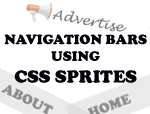I usually find comments around the web that say blogs run on blogger/blogspot are not optimized for search engines just because we need to manually add alt and title tags for each image you post on your blog. Isn't it kinda of irritating to add stuffs manually every time you post them??? Well, not any more! I found a script that'll automatically add the alt and title tag for the images that you post on your blog.
WHY THIS SCRIPT?
I recommend you to read the following article - 3 Tips To Make Images SEO Friendly On Blogger. I guess you understood the importance of alt and title tags on your blog. I can assure you that this script will rank your blog better, than before, on search engines. What's little more interesting about this script is that, it'll add alt and title tags for all the images - be it the one that your going to post or the ones that already exist in your blog.
HOW IT WORKS?
The script just uses the name of your image to auto generate the "alt" and "title" tags. In other words, the name of your image stands as the text for your alt and title tag. It picks up the next character after the last instance of "/" from the image URL as the starting letter of your alt or title tag. The ending character will be recognized using the last instance of "." from your image URL.
For example, you upload an image "super-script.jpg" using post editor. You'll find the image URL as "http://1.bp.blogspot.com/....../super-script.jpg". When you publish the article and go check out the source code of the same (source code of the image), you'll find the following tags in it - alt="super-script" and title="super-script". Isn't it cool? No more manual addition of tags! Just a proper name for the images and the script will do the rest!
Just keep these two things in your mind before you name an image.
1. Dont' use / or . character when you name your images.
2. Use a name that best explains the image for better SEO.
INSTALLING THE SCRIPT
1. Navigate to "Design >> Edit HTML" and make a backup of your template by clicking on the "Download full template" link at the top of the page. Once the back up is over, search for the following piece of code.
</body>
2. Download this text document - IMAGE SEO SCRIPT FOR BLOGGER and paste the code present in it just above the line mentioned in step 1.
3. Save your template. That's it! Very simple! Isn't it?
Note: Usage of above script is subject to copyrights. Do not make any changes to the above code. If you do so, it'll attract a violation of copyrights and you'll be filed under DMCA. For webmasters, you can modify the script provided you give a credit to this article. It's my kind request to you guys!
The above script is found to work on all major browsers - IE, Firefox, Opera, Safari and Chrome. WordPress users can follow the same instructions to get this script working on their blogs as well. I'll soon post another script that makes your external links open on a new tab with an automatic "nofollow" tag attached to it - just to ensure that your link juice isn't spread to other blogs. I suggest you to subscribe to my blog so that, you don't miss it! Share your opinions about the magic script via comments!






 This article illustrates about creating unique navigation bars using Adode PhotoShop and CSS Sprites. By using CSS Sprites, we achieve the following advantages - save bandwidth (less image size), reduce the number of HTTP requests and make our blog browser compatible.
This article illustrates about creating unique navigation bars using Adode PhotoShop and CSS Sprites. By using CSS Sprites, we achieve the following advantages - save bandwidth (less image size), reduce the number of HTTP requests and make our blog browser compatible.

